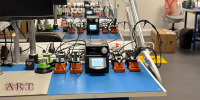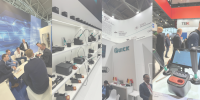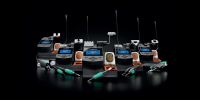
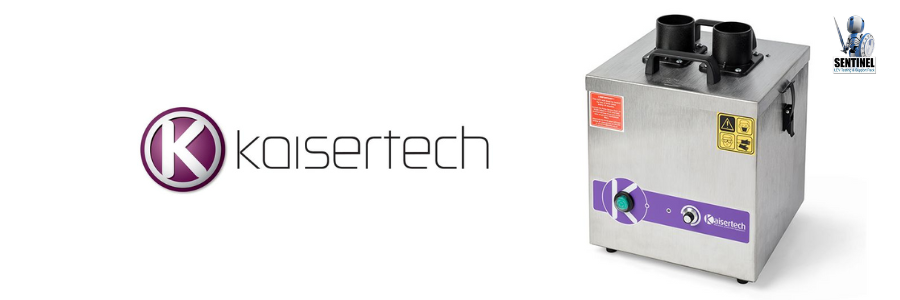

If your workplace is subject to producing hazardous contaminants in your workspace, it is imperative that an LEV system is installed to prevent health risks for operatives in the future.
In this guide, we will touch upon the importance of having an LEV system installed, what happens during LEV testing and what issues can arise after installation.
What Is An LEV System?
Local exhaust ventilation (LEV) is an extract ventilation system that draws airborne hazardous substances such as dusts, fumes and vapours from the workplace air to prevent inhalation and protect operatives health.
A correctly designed and maintained LEV system will ensure clean and safe air for all operatives health. In the diagram below, you can see how our Purex fume Extractors operate when filtering out harmful substances.
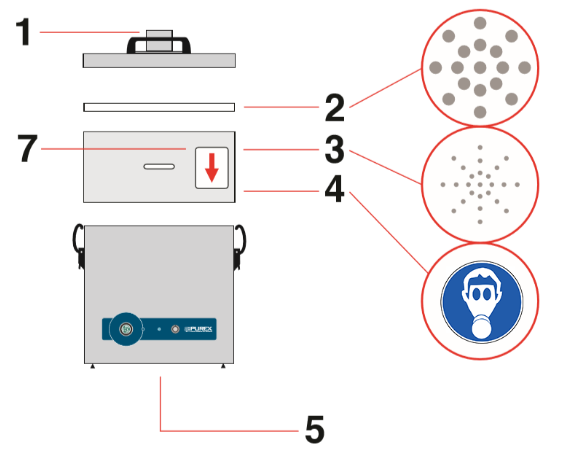

Is LEV Testing A Legal Requirement?
In line with HSE’s Occupational Lung Disease in Great Britain 2022 report, 12,000 lung disease deaths each year are estimated to be linked to past exposures at work. This has led to increasingly stringent guidelines and statutory requirements for Local Exhaust Ventilation.
According to the Control of Substances Hazardous to Health Regulations, employers must prevent or adequately control exposures to hazardous substances. The Health and Safety Work Act 1974 states that any employer who uses LEV techniques within the workplace must test their equipment at least every 14 months to ensure efficiency.
Installing an LEV system may aid in controlling these hazardous substances, however, you should consider other options where it's sufficient to do so, such as:
- Replace your method of work processes so that exposure to hazardous substances will no longer occur
- Substitute the material being used to something safer
- Modify the process to reduce the duration or frequency that the contaminant is released
- Reduce the number of employees involved with a process
- Apply simple control methods, e.g. fitting lids to equipment
How Do I Get My LEV System Tested?
Simple, with a Purex Sentinel - LEV Testing & Support Pack. The 1 or 3 year pack helps to ensure that your LEV system is tested on time every time.
Plus you also receive additional machine support benefits and we don't just LEV test Purex systems, we can test your whole site.
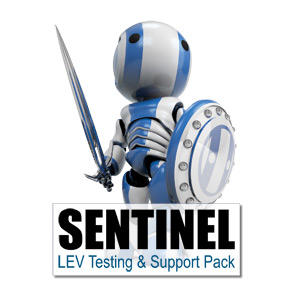

What Happens During LEV Testing?
During LEV testing, all parts of the system will be inspected and reported on its performance and effectiveness. Where necessary, restoration will take place in order to guarantee 100% effectiveness of the system.
The process usually follows 3 steps:
Step 1: Visual and structural examination
Within the first stages of LEV testing, a thorough examination of all external parts is undertaken to detect damage, wear and tear. The internal duct, hatch seal and filter cleaning is assessed on ability to work correctly.
Then, the monitors, alarms and check on pressure gauges are tested. Finally, the system is given an overall inspection to look for indications of effectiveness such as dust around the LEV hood or a noisy fan operation.
Step 2: Measure technical performance
The next stage of LEV testing measures the technical performance of the system.
The air velocities and static pressures are measured in the main branch ducts and hood faces. The fan speed, motor speed, power consumption and make-up air supply is then checked for replacement.
Finally, all alarms are tested by simulating failure and the air cleaner performance is tested in recirculating systems.
Step 3: Assess control effectiveness
Finally, there is careful observation of LEV processes and sources as well as assessment of how effective the LEV is at controlling an operators’ exposure.
Smoke and dust lamp tests are then carried out to determine any leakages in the breathing zone or any escape of dust or mites.
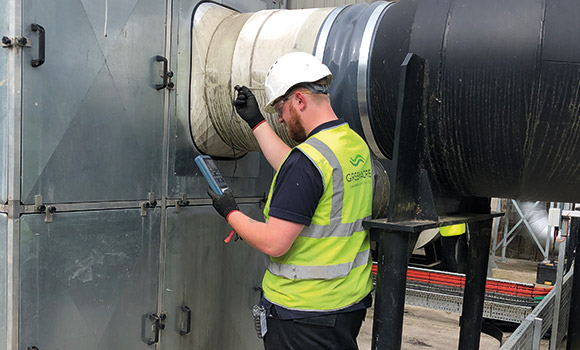

What Issues Can Arise With LEV Systems?
1. Overexposure & Ineffective Controls
Despite having an LEV system in place, employees are still often overexposed to hazardous substances from external sources. In order to prevent overexposure and reduce inefficiency, employers should continue to re-evaluate their current systems within the workplace.
In turn, employers can also save on maintenance and repair expenses.
2. Complacency
After installing an LEV system, you must ensure that you are not complacent with maintenance. Employers should regularly conduct inspections in the workplace; they should also seek help from dust extraction solution companies when necessary.
3. Incorrect use of controls
Never allow untrained or inexperienced personnel to tamper with the controls – inappropriate use can result in damage to the controls, which can lead to LEV deterioration.
What Needs To Be Done Once An LEV System Is Installed?
Once an LEV system has been installed at your premises, it is important that the following steps are undertaken to maintain efficiency.
1. Commissioning
After installation, the system must be authorised to prove it’s capable of protecting your employees as it should. The results of the commissioning should be used as a benchmark against the future performance of the system.
A document or copy of the results should be kept until the system is decommissioned and replaced.
2. Staff training on LEV systems
It is helpful to train your staff on how the system should be used, if its operating correctly and how they can carry out their daily processes to make certain that there is maximum control of the contaminant pollution in the workplace air.
3. Maintenance and servicing
The LEV system should be serviced and maintained in accordance with the manufacturer’s instructions and recommendations. With each LEV system, it is likely that there will be a user manual, which should specify daily, weekly or monthly checks on the performance and condition of the system.
It is recommended that all checks on external parts should be recorded in a log book.
4. Legal requirements to thoroughly examine and test
Every LEV system requires a statutory examination and test by a qualified person, at least every 14 months. The employer installing the system should keep a copy of the report for at least five years.
A detailed guide to how a thorough examination and test can be undertaken can be found in HSG258 Controlling Airborne Contaminants at Work: A guide to local exhaust ventilation and Regulation 9 of the Control of Substances Hazardous to Health Regulations.
In Summary
We hope this article has brought sufficient clarity to how LEV systems should correctly function and how they should be maintained over time.
Remember, that your LEV system should be tested at least every 14 months to accompany government guidelines. So, ensure to keep record of all LEV system information in a log book to maintain efficiency and protect your employees.
Click our link below to enquire further with an LEV test through Kaisertech.


